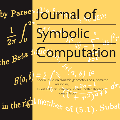Semantic communication is an increasingly popular framework for wireless image transmission due to its high communication efficiency. With the aid of the joint-source-and-channel (JSC) encoder implemented by neural network, semantic communication directly maps original images into symbol sequences containing semantic information. Compared with the traditional separate source and channel coding design used in bitlevel communication systems, semantic communication systems are known to be more efficient and accurate especially in the low signal-to-the-noise ratio (SNR) regime. This thus prompts an critical while yet to be tackled issue of security in semantic communication: it makes the eavesdropper more easier to crack the semantic information as it can be decoded even in a quite noisy channel. In this letter, we develop a semantic communication framework that accounts for both semantic meaning decoding efficiency and its risk of privacy leakage. To achieve this, targeting wireless image transmission, we on the one hand propose an JSC autoencoder featuring residual for efficient semantic meaning extraction and transmission, and on the other hand, propose a data-driven scheme that balances the efficiency-privacy tradeoff. Extensive experimental results are provided to show the effectiveness and robustness of the proposed scheme.
翻译:由于通信效率高,语义通信日益成为无线图像传输的流行框架。在神经网络实施的联合源和气道编码器的帮助下,语义通信直接将原始图像映射为含有语义信息的符号序列。与在比特级通信系统中使用的传统单独源和频道编码设计相比,语义通信系统已知更高效、更准确,特别是在信号到噪音比率低的系统(SNR)中。因此,这在语义通信的安全问题有待解决时引发了一个关键的问题:它使得窃听器更容易破解语义信息,因为它即使在一个非常吵闹的频道中也可以解码。在这封信中,我们开发了一个语义通信框架,既考虑到语义含义的解码效率,又考虑到隐私渗漏的风险。为了实现这一目标,针对无线图像传输,我们一方面建议建立一个JSC自动编码器,为高效的语义提取和传输提供残留的语义安全问题,另一方面则提议一个数据驱动的磁性模型,以显示高额的实验性效率平衡。




